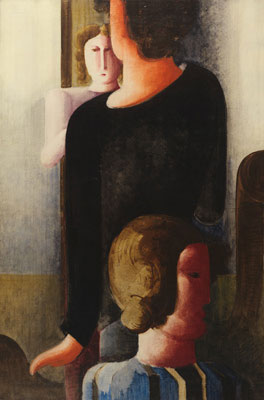The Busch-Reisinger Museum—the only museum in North America dedicated to the study of art from German-speaking countries of central and northern Europe—has an extensive collection of material related to the Bauhaus, including works by Anni Albers, Josef Albers, Herbert Bayer, Marianne Brandt, Marcel Breuer, Lyonel Feininger, Wassily Kandinsky, Paul Klee, László Moholy-Nagy, and Oskar Schlemmer. The Bauhaus, a German school of art and design founded by architect Walter Gropius in 1919, is known for the influence it had on modern art, design, and new ideas in architecture.
On Tuesday, May 6, Laura Muir, research curator for academic and public programs at the Harvard Art Museums, will discuss how the Busch-Reisinger Museum, formerly the Germanic Museum, came to assemble a great collection of Bauhaus works with help from Gropius. The partnership began when Gropius arrived at Harvard to teach architecture in 1937. (He served as department chairman from 1938 to 1952.) The partnership between the architect and the museum “grew stronger in the years immediately following World War II, and resulted in one of the most significant collections of Bauhaus art, design, and archival material in America,” said Muir. “In addition to helping the museum locate former Bauhaus affiliates, Gropius donated his own architectural archive as well as important examples of Bauhaus design.”
Hosted by Historic New England, the lecture will take place at Otis House at 141 Cambridge Street in Boston from 7 to 8:30pm. To attend, please register on the Historic New England website.




